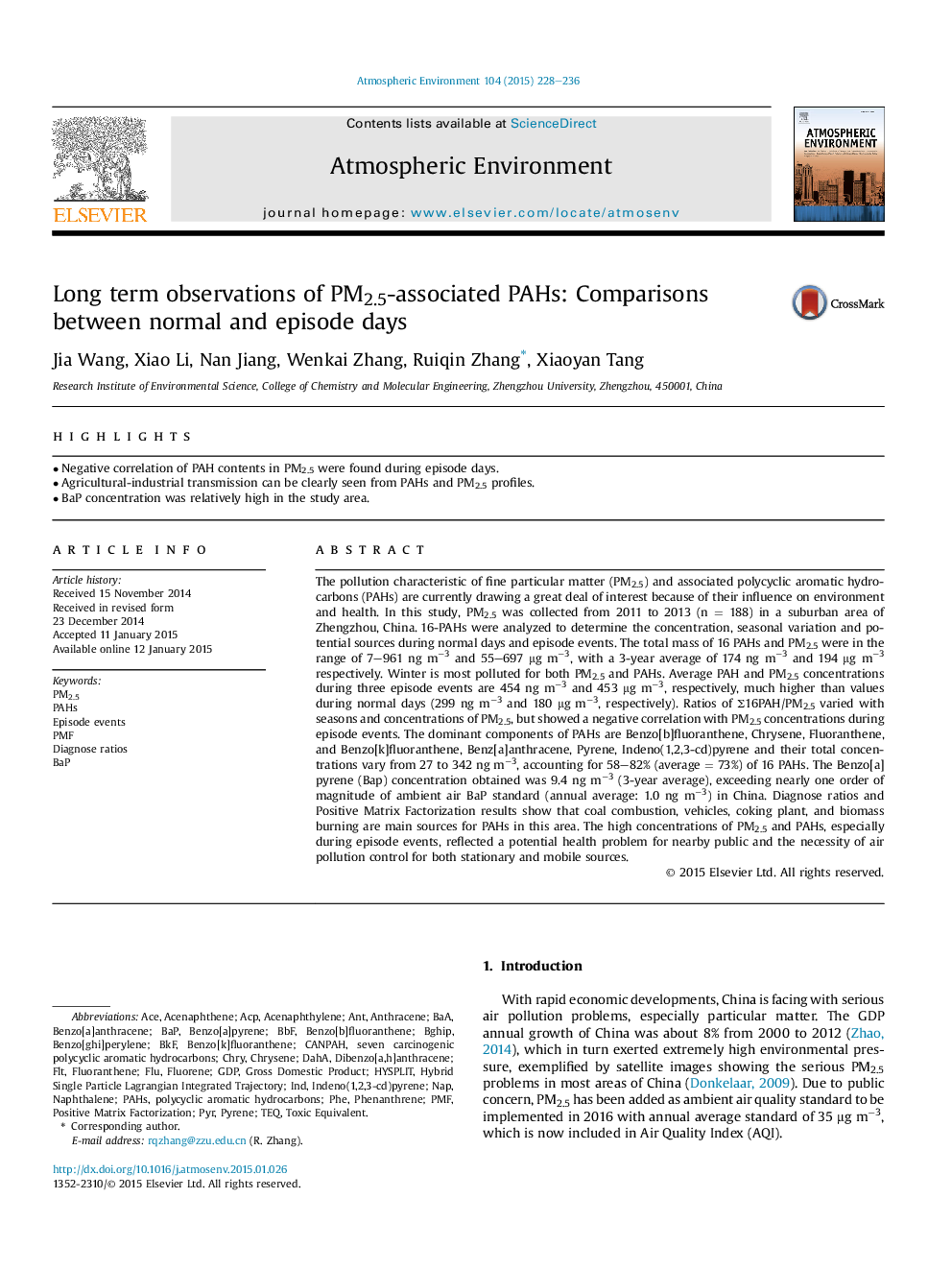| کد مقاله | کد نشریه | سال انتشار | مقاله انگلیسی | نسخه تمام متن |
|---|---|---|---|---|
| 6338790 | 1620367 | 2015 | 9 صفحه PDF | دانلود رایگان |

- Negative correlation of PAH contents in PM2.5 were found during episode days.
- Agricultural-industrial transmission can be clearly seen from PAHs and PM2.5 profiles.
- BaP concentration was relatively high in the study area.
The pollution characteristic of fine particular matter (PM2.5) and associated polycyclic aromatic hydrocarbons (PAHs) are currently drawing a great deal of interest because of their influence on environment and health. In this study, PM2.5 was collected from 2011 to 2013 (n = 188) in a suburban area of Zhengzhou, China. 16-PAHs were analyzed to determine the concentration, seasonal variation and potential sources during normal days and episode events. The total mass of 16 PAHs and PM2.5 were in the range of 7-961 ng mâ3 and 55-697 μg mâ3, with a 3-year average of 174 ng mâ3 and 194 μg mâ3 respectively. Winter is most polluted for both PM2.5 and PAHs. Average PAH and PM2.5 concentrations during three episode events are 454 ng mâ3 and 453 μg mâ3, respectively, much higher than values during normal days (299 ng mâ3 and 180 μg mâ3, respectively). Ratios of Σ16PAH/PM2.5 varied with seasons and concentrations of PM2.5, but showed a negative correlation with PM2.5 concentrations during episode events. The dominant components of PAHs are Benzo[b]fluoranthene, Chrysene, Fluoranthene, and Benzo[k]fluoranthene, Benz[a]anthracene, Pyrene, Indeno(1,2,3-cd)pyrene and their total concentrations vary from 27 to 342 ng mâ3, accounting for 58-82% (average = 73%) of 16 PAHs. The Benzo[a]pyrene (Bap) concentration obtained was 9.4 ng mâ3 (3-year average), exceeding nearly one order of magnitude of ambient air BaP standard (annual average: 1.0 ng mâ3) in China. Diagnose ratios and Positive Matrix Factorization results show that coal combustion, vehicles, coking plant, and biomass burning are main sources for PAHs in this area. The high concentrations of PM2.5 and PAHs, especially during episode events, reflected a potential health problem for nearby public and the necessity of air pollution control for both stationary and mobile sources.
Journal: Atmospheric Environment - Volume 104, March 2015, Pages 228-236